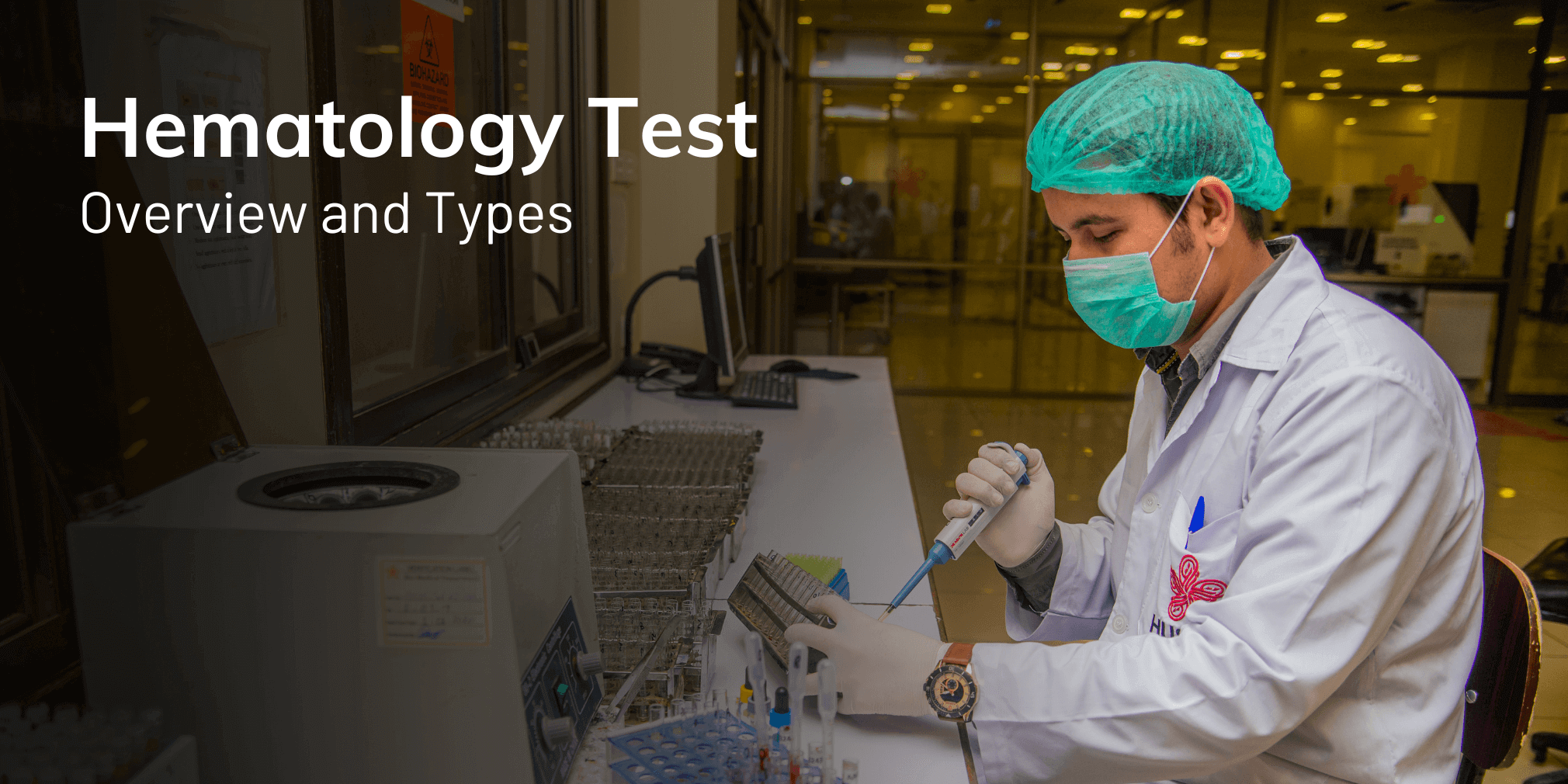
Hematology Test: Overview and Types
A hematology test is a vital tool to evaluate components of your blood, i.e., red cells, white cells, platelets, and related parameters. This, in turn, helps diagnose infections, anemia, clotting issues, and hematological disorders.
As a key part of modern healthcare, hematology enables early detection and management of diseases ranging from iron-deficiency anemia to leukemia. Whether you’re prepping for Husaini Blood Bank’s lab tests or a routine check-up, understanding what a hematology test is, and normal value ranges can help you interpret your results and stay informed about your health.
1. Hematology Meaning & Scope
Hematology (or heamatology in some countries) is the medical field focused on blood, its cellular elements, and disorders related to blood formation. It covers:
- Red blood cells (RBCs): Carry oxygen via hemoglobin
- White blood cells (WBCs): Defend against infections
- Platelets: Enable blood clotting
- Coagulation factors & blood-forming tissues like bone marrow, spleen, and lymph nodes
Hematologists treat conditions such as anemia, hemoglobinopathies (e.g., sickle cell), coagulopathies (e.g., hemophilia), and blood cancers like leukemia or lymphoma. Laboratory professionals analyze blood through techniques like CBC, ESR, coagulation tests, and blood film slides to understand these conditions.
Key Hematology Tests Explained
a) Complete Blood Count (CBC)
Also known as FBC or hemogram, this is the most common hematology test. It measures:
- RBC count, Hemoglobin (Hgb), Hematocrit (Hct)
- RBC indices (MCV, MCH, MCHC)
- WBC total & differential (neutrophils, lymphocytes, etc.)
- Platelet count
Normal adult ranges include:
- Hemoglobin: M 13.5–17.5 g/dL, F 12–15 g/dL
- Hematocrit: M 40–54%, F 35–49%WBC: 3.6–10.6 ×10⁹/L
Platelets: 150–450 ×10⁹/L
CBC is essential to detect anemia, infections, thrombocytopenia, and early markers of leukemia.
b) Peripheral Blood Smear
A stained drop of blood is examined microscopically to assess cell shape and structure, identifying abnormalities like sickle cells, spherocytes, or blasts seen in leukemia.
c) Erythrocyte Sedimentation Rate (ESR)
Measures how fast red cells settle in a tube over an hour. Elevated ESR signals inflammation, infection, or cancer; low ESR might indicate dehydration or sickle cell disease.
d) Coagulation Tests
Include PT/INR and APTT, and measure clotting pathway efficiency. This is crucial for diagnosing hemophilia or monitoring anticoagulants.
e) Reticulocyte Count & Bone Marrow
Retics reflect new RBC production (normal 0.5–2.5%). For unexplained abnormalities or suspected marrow disorders like leukemia or myelodysplasia, a bone marrow biopsy may be performed.
f) Iron Studies & Hemoglobinopathies
Tests include serum iron, TIBC, ferritin, and hemoglobin electrophoresis to diagnose iron deficiency, hemochromatosis, thalassemia, and sickle-cell disease.
What Hematology Test Values Mean
Normal vs Abnormal Values
- Hemoglobin & Hematocrit: Low = anemia; high = dehydration/polycythemia.
- MCV (80–100 fL): ↓ = microcytic anemia (iron deficiency, thalassemia); ↑ = macrocytic anemia (B12/folate).
- RDW: Elevated = mixed cell sizes, seen in iron deficiency or early anemia.
- WBC: ↑ indicates infection or leukemia; ↓ seen in immunosuppression or bone marrow failure.
- Platelets: ↓ (thrombocytopenia) = bleeding risk; ↑ = inflammation or myeloproliferative disorders.
- ESR: Elevated in inflammatory/autoimmune diseases; low in polycythemia or sickle cell.
Hematological Disorders
Common blood-related disorders diagnosed via hematology tests include:
- Anemia (iron/folate/B12 deficiency, hemolysis)
- Leukemia/lymphoma (identified through blasts, abnormal WBCs)
- Hemoglobinopathies (sickle cell, thalassemia)
- Coagulation disorders like hemophilia or Von Willebrand disease
- Thrombocytopenia, which can cause bruising and bleeding risk
- Myelodysplastic syndromes, aplastic anemia, bone marrow failure
Hematology profiling is foundational to diagnosing, managing, and monitoring treatment progress in these conditions.
Preparation & Sample Collection
- Fasting isn’t required for CBC, but may be advised for iron/ferritin tests.
- Blood is collected in EDTA tubes for CBC/smear, citrate tubes for ESR/coagulation.
- Samples must be tested within hours to ensure accuracy; delays can skew ESR or platelet counts.
- Results are interpreted based on reference ranges that vary by age, sex, and labs.
Summary of Key Points
- What is hematology test?
A set of blood analyses (CBC, ESR, smear, coagulation, etc.) to assess blood cell counts, morphology, and clotting functions. - Hematology meaning:
Study of blood and disorders like anemia, leukemia, and coagulation abnormalities. - Normal values:
Hgb 13.5–17.5 g/dL (male), 12–15 g/dL (female); WBC 3.6–10.6; PLT 150–450; ESR male <15 mm/hr, female <20 mm/hr. - Major disorders detected:
Includes anemia, infection, hematologic cancers, clotting disorders, and hemoglobinopathies.
Next Steps
- Schedule your hematology test or complete blood count at Husaini Blood Bank via our Sample Collection page.
- Ask your clinician about any abnormal CBC or ESR results and follow-up tests like iron studies, coagulation panels, or peripheral smears.
- Regular monitoring, especially for those with chronic conditions or medication use, helps maintain optimal blood health.
